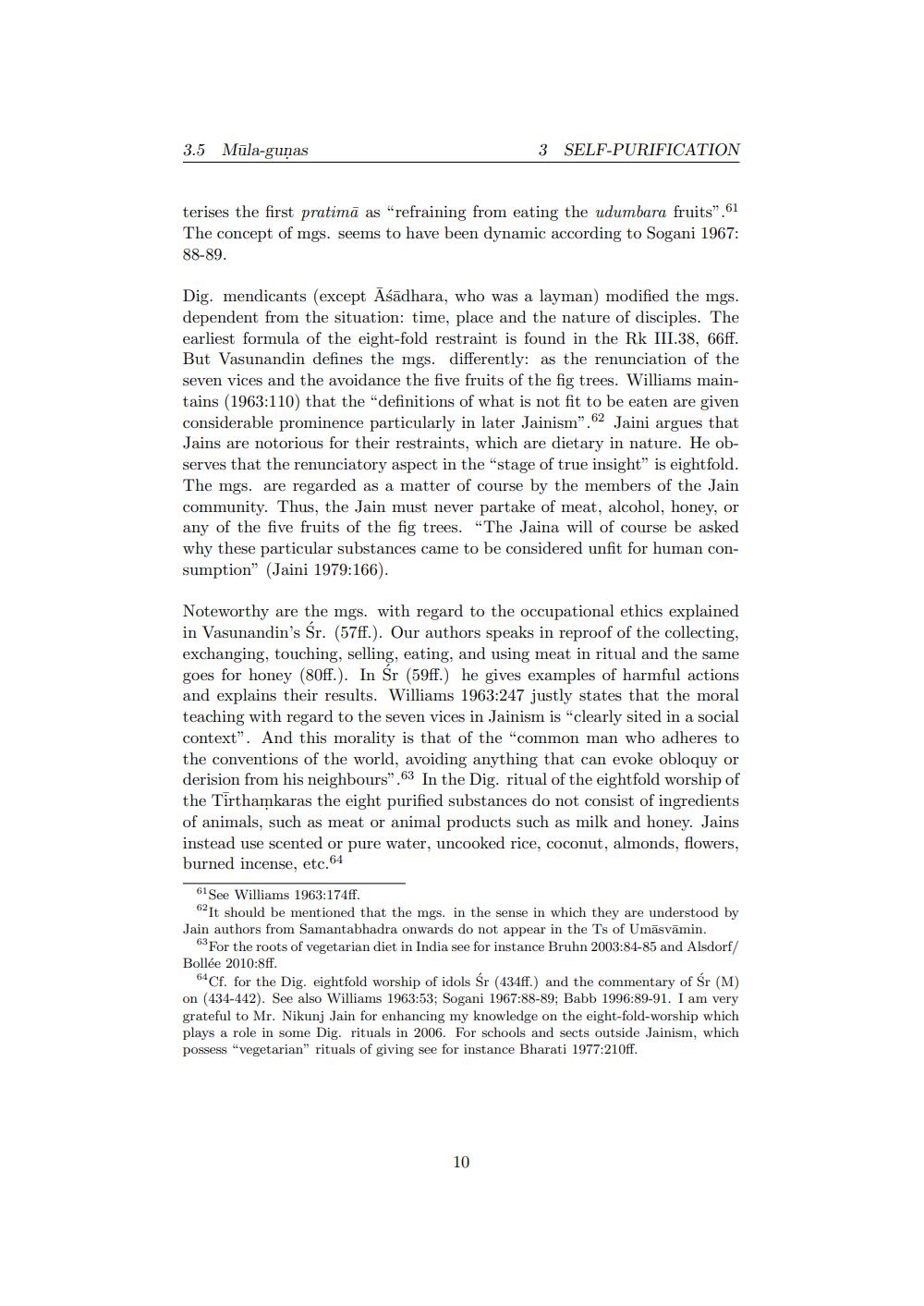________________
3.5 Mūla-gunas
3 SELF-PURIFICATION
terises the first pratimā as "refraining from eating the udumbara fruits". 61 The concept of mgs. seems to have been dynamic according to Sogani 1967: 88-89.
Dig. mendicants (except Asādhara, who was a layman) modified the mgs. dependent from the situation: time, place and the nature of disciples. The earliest formula of the eight-fold restraint is found in the Rk III.38, 66ff. But Vasunandin defines the mgs. differently: as the renunciation of the seven vices and the avoidance the five fruits of the fig trees. Williams maintains (1963:110) that the definitions of what is not fit to be eaten are given considerable prominence particularly in later Jainism". 62 Jaini argues that Jains are notorious for their restraints, which are dietary in nature. He observes that the renunciatory aspect in the "stage of true insight" is eightfold. The mgs. are regarded as a matter of course by the members of the Jain community. Thus, the Jain must never partake of meat, alcohol, honey, or any of the five fruits of the fig trees. "The Jaina will of course be asked why these particular substances came to be considered unfit for human consumption" (Jaini 1979:166).
Noteworthy are the mgs. with regard to the occupational ethics explained in Vasunandin's Sr. (57ff.). Our authors speaks in reproof of the collecting, exchanging, touching, selling, eating, and using meat in ritual and the same goes for honey (80ff.). In Sr (59ff.) he gives examples of harmful actions and explains their results. Williams 1963:247 justly states that the moral teaching with regard to the seven vices in Jainism is "clearly sited in a social context". And this morality is that of the "common man who adheres to the conventions of the world, avoiding anything that can evoke obloquy or derision from his neighbours". 63 In the Dig, ritual of the eightfold worship of the Tirthamkaras the eight purified substances do not consist of ingredients of animals, such as meat or animal products such as milk and honey. Jains instead use scented or pure water, uncooked rice, coconut, almonds, flowers, burned incense, etc.64
61 See Williams 1963:174ff.
62It should be mentioned that the mgs. in the sense in which they are understood by Jain authors from Samantabhadra onwards do not appear in the Ts of Umāsvāmin.
3 For the roots of vegetarian diet in India see for instance Bruhn 2003:84-85 and Alsdorf/ Bollée 2010:8ff.
64Cf. for the Dig. eightfold worship of idols Śr (434ff.) and the commentary of Śr (M) on (434-442). See also Williams 1963:53; Sogani 1967:88-89; Babb 1996:89-91. I am very grateful to Mr. Nikunj Jain for enhancing my knowledge on the eight-fold-worship which plays a role in some Dig. rituals in 2006. For schools and sects outside Jainism, which possess "vegetarian" rituals of giving see for instance Bharati 1977:210ff.




